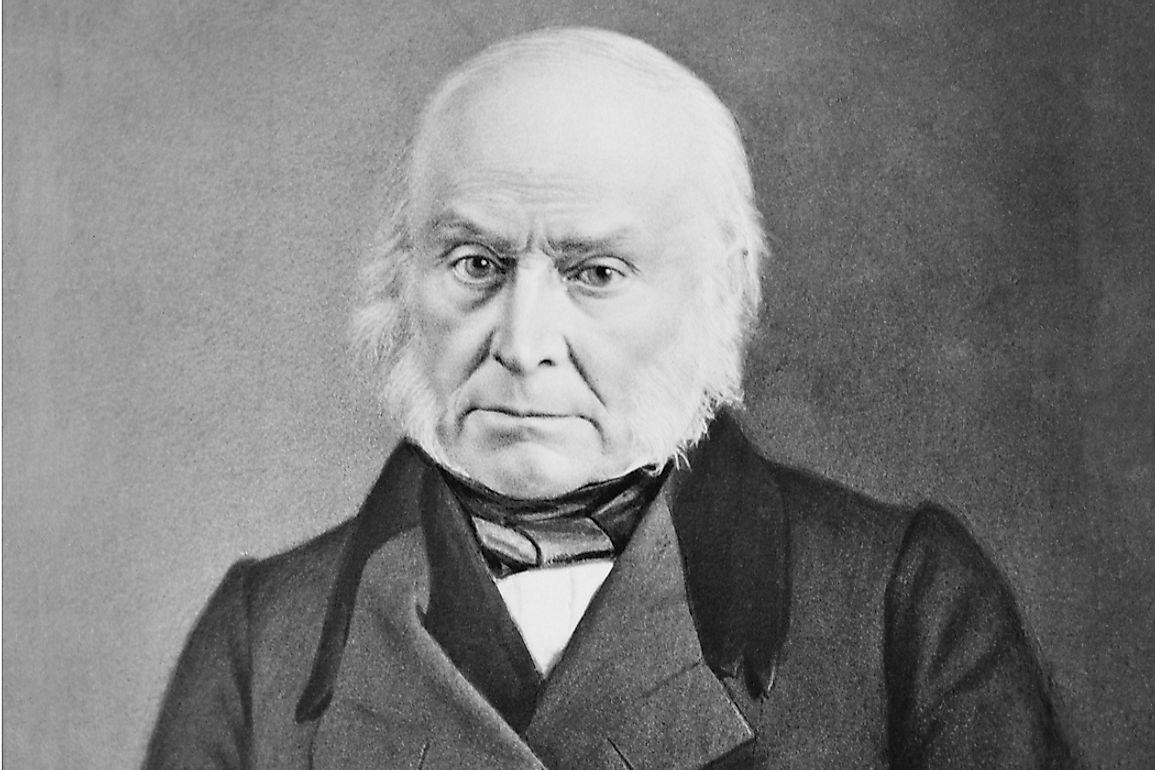John Quincy Adams – 6th President of the United States

5. Early Life
John Quincy Adams, the United States’ Sixth President, had a statesman’s upbringing. He was born in Braintree, Massachusetts in 1767 and his father, John Adams, would go on to become the Second President of the US himself. When John Quincy was only ten years old, his father brought him on a seven-year trip to Europe where he served as an envoy of the new United States government. Meanwhile, John Quincy went to school, and learned how to become a good statesman by watching his father. He returned to the United States to attend Harvard University, and then began a career as a lawyer in Boston.
4. Rise to Power
John Quincy Adams only practiced law for two years before George Washington sent him to the Netherlands as a US ambassador there. Later, he also served in the Massachusetts State Legislature, which appointed him to the United States Senate as a Federalist in 1803. While in the Senate, he supported President Jefferson’s Louisiana Purchase plan, which made him very unpopular with fellow members of the Federalist party. In 1808, he was replaced in the Senate, and broke ties with the Federalist party, becoming a Democratic-Republican instead. He became the United States of America's first minister to Russia in 1809. Later, President Monroe appointed him to serve as Secretary of State, where he accomplished some of his most famous political victories.
3. Contributions
As Secretary of State, John Quincy Adams worked closely with President Monroe to create the famous Monroe Doctrine, which warned that the United States would take action against any European country that meddled in the Americas. He was also instrumental in helping to write The Treaty of Ghent, which set the terms of the peace treaty between the US and Great Britain which ended the War of 1812. Unfortunately, his single term as the Sixth US President proved much less profitable than his time as Secretary of State, and he is not generally remembered for the feats he accomplished during his presidency. After failing to win a second term as President, he continued on to represent Massachusetts in the House of Representatives for nine terms. There, he famously fought against slavery as one of the most vocal abolitionists in Congress.
2. Challenges
John Quincy Adams's presidency was fraught with problems. He was the first man to become President despite both losing the popular vote and failing to receive a majority in the electoral college. Instead, the House of Representatives appointed him as President in 1824 when no candidate won a majority of electoral votes. This greatly angered Andrew Jackson, who in fact received more votes than any other candidate. While in office, John Quincy Adams struggled to form political alliances and refused to compromise his principles, despite the opinions of others. He had a vision for an “American System” of trade across the continent, but his plan required massive amounts of new infrastructure that Congress ultimately refused to fund. He also passed a series of tariffs on imported goods that voters disliked. When 1828 rolled around, his long-time political opponent Andrew Jackson had no trouble defeating his campaign's bid for a second term.
1. Death and Legacy
Despite what has been considered a weak presidency, John Quincy Adams is mostly remembered for the great work he accomplished in his other political positions. Of these, he is most famous for the actions he took as Secretary of State under President Monroe. As the only President to run for political office after having served as President, John Quincy proved that he truly was born for politics, and would not just settle for being a retired former President. He worked tirelessly as a representative until he died of a stroke on the floor of the House of Representatives, on February 23rd, 1848.











